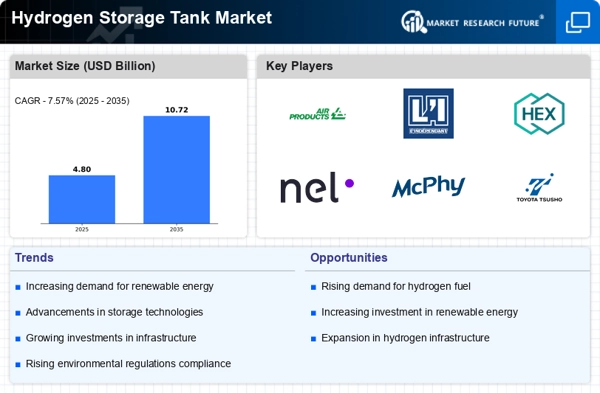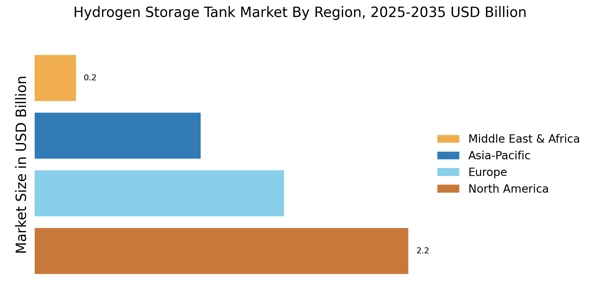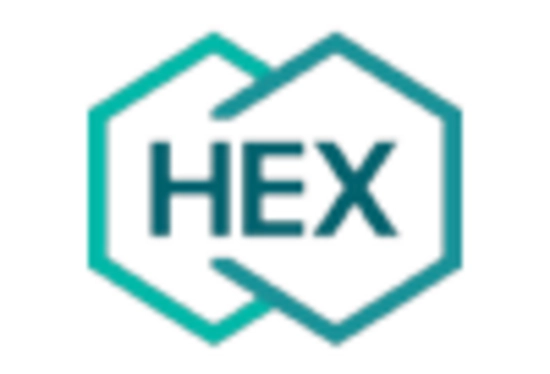Regulatory Support and Policy Frameworks
Regulatory support and favorable policy frameworks are vital for the Hydrogen Storage Tank Market. Governments are implementing policies that promote the use of hydrogen as a clean energy source, which includes incentives for the development of hydrogen storage technologies. These policies often encompass tax credits, grants, and subsidies aimed at reducing the financial burden on companies investing in hydrogen infrastructure. Additionally, international agreements focused on climate change are pushing nations to adopt hydrogen solutions, thereby creating a conducive environment for market growth. The establishment of clear regulatory guidelines also enhances investor confidence, which is essential for the long-term sustainability of the hydrogen storage market.
Growing Industrial Applications of Hydrogen
The Hydrogen Storage Tank Market is witnessing a growing interest in industrial applications of hydrogen. Industries such as transportation, manufacturing, and power generation are increasingly adopting hydrogen as a clean alternative to fossil fuels. For instance, hydrogen fuel cells are being utilized in heavy-duty vehicles and public transport systems, which necessitates the development of robust storage solutions. Furthermore, the chemical industry is exploring hydrogen as a feedstock for producing ammonia and other chemicals, further driving the demand for storage tanks. Market forecasts indicate that the industrial sector's demand for hydrogen storage could rise by approximately 25% over the next decade, reflecting the expanding role of hydrogen in various industrial processes.
Rising Demand for Renewable Energy Solutions
The Hydrogen Storage Tank Market is significantly influenced by the rising demand for renewable energy solutions. As nations strive to meet their climate goals, hydrogen is increasingly recognized as a viable energy carrier that can complement renewable sources like wind and solar. Hydrogen storage tanks play a pivotal role in this ecosystem by enabling the storage of excess energy generated during peak production times. This stored hydrogen can then be utilized during periods of low energy generation, thus ensuring a stable energy supply. Market analysis suggests that the demand for hydrogen storage solutions could increase by over 30% in the next five years, driven by the growing integration of hydrogen into energy systems worldwide.
Technological Innovations in Hydrogen Storage
The Hydrogen Storage Tank Market is experiencing a surge in technological innovations that enhance storage efficiency and safety. Advanced materials, such as metal hydrides and composite materials, are being developed to improve the energy density of storage tanks. These innovations are crucial as they address the challenges of hydrogen embrittlement and leakage, which have historically hindered the adoption of hydrogen as a fuel source. Furthermore, the integration of smart technologies, such as IoT sensors, allows for real-time monitoring of storage conditions, thereby increasing operational safety. According to recent data, the market for advanced hydrogen storage solutions is projected to grow at a compound annual growth rate of over 15% in the coming years, indicating a robust demand for innovative storage technologies.
Increasing Investment in Hydrogen Infrastructure
Investment in hydrogen infrastructure is a key driver for the Hydrogen Storage Tank Market. Governments and private entities are allocating substantial funds to develop hydrogen production, distribution, and storage facilities. This investment is often part of broader initiatives aimed at reducing carbon emissions and transitioning to sustainable energy sources. For instance, several countries have announced multi-billion dollar plans to establish hydrogen hubs, which include the construction of storage facilities. This influx of capital not only enhances the availability of hydrogen storage solutions but also stimulates technological advancements within the industry. As a result, the market is expected to witness a significant increase in storage capacity, with projections indicating a potential doubling of storage facilities by 2030.


















Leave a Comment